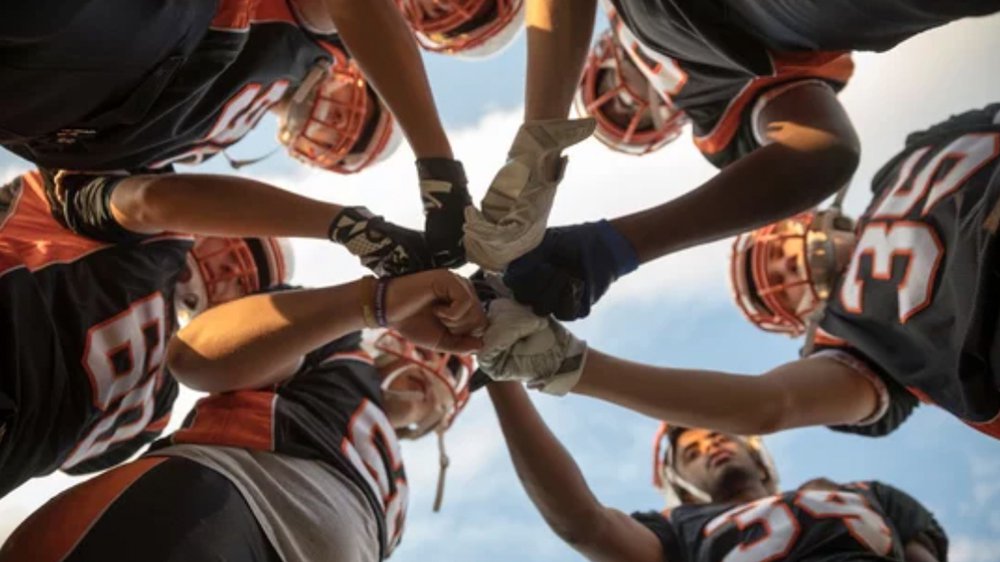Deaf high school football team nears undefeated season and moves toward championship – By DA Staff, District Administration
A high school football team in Riverside, California, is playing a history-making season. Their so far undefeated season is unprecedented not only because they have just 23 players – but because all of them are deaf.
For the first time in nearly 60 years, California School for the Deaf could watch their varsity football team win the division championship, KCBS reports.
KCBS reporter Nicole Comstock interviewed the team ahead of a game Friday, when their record stood at 11-0. With two more wins, they could make it to the championship – and the players couldn’t even describe the excitement. “I don’t even know how to put that in words,” said quarterback Ricardo Terrazas. “I’m ready! I’m ready to do it. I’m fired up.”
The players may not be able to hear whistles or calls, but they can communicate with hand signals and body language. Head coach Keith Adams said it’s all about hard work and practice.
Deaf high school football team nears undefeated season and moves toward championship – By DA Staff, District Administration
A high school football team in Riverside, California, is playing a history-making season. Their so far undefeated season is unprecedented not only because they have just 23 players – but because all of them are deaf.
For the first time in nearly 60 years, California School for the Deaf could watch their varsity football team win the division championship, KCBS reports.
KCBS reporter Nicole Comstock interviewed the team ahead of a game Friday, when their record stood at 11-0. With two more wins, they could make it to the championship – and the players couldn’t even describe the excitement. “I don’t even know how to put that in words,” said quarterback Ricardo Terrazas. “I’m ready! I’m ready to do it. I’m fired up.”
The players may not be able to hear whistles or calls, but they can communicate with hand signals and body language. Head coach Keith Adams said it’s all about hard work and practice.

Oregon to implement ‘test-to-stay’ program in K-12 schools – By Elizabeth Miller, Oregon Public Broadcasting
For weeks now, Oregon education officials have wanted schools to have “test-to-stay,” a program that keeps students in class when they’ve tested negative for COVID-19.
But those officials said supply chain issues made implementing such a program difficult.
Until now.
“We know the critical importance that school attendance has on student success,” said Oregon Department of Education director Colt Gill in a statement shared Tuesday.
“Using test to stay as part of a layered set of protocols in schools will keep students and educators in classrooms, maximizing days spent in school learning, growing and thriving.”
The program will work like this: students who have been exposed to COVID-19 in a school setting will take two tests: the first “soon after exposure” will usually occur at school. The student will test again five to seven days after the initial test.

Parents are scrambling after schools suddenly cancel class over staffing and burnout – By Anya Kamenetz, NPR
Two weeks' notice: Winston-Salem/Forsyth County Schools in North Carolina voted on Oct. 28 to close schools on Nov. 12 for a "day of kindness, community and connection."
Five days' notice: On the evening of Wednesday, Nov. 17, Ann Arbor Public Schools in Michigan announced that schools would be closed the following Monday and Tuesday, extending Thanksgiving break for a full week. The district cited rising COVID-19 cases and staff shortages.
Three and even two days' notice: On Tuesday and Wednesday, Nov. 9 and 10, three different districts in Washington state — in Seattle, Bellevue and Kent — announced schools would be closed that same Friday, the day after Veterans Day, due to staff shortages.
Schools and districts around the country have been canceling classes on short notice. The cancellations aren't directly for COVID-19 quarantines; instead schools are citing staff shortages, staff fatigue, mental health and sometimes even student fights.

Build Back Better Act a ‘Game-Changer’ for Early Childhood Education – By Lauren Camera, U.S. News
With the $1.75 trillion Build Back Better package of education, health care, workforce and other social benefits passing the House and headed to the Senate, the U.S. stands poised to make a seismic improvement in increasing access to early childhood education.
“I don’t think it's hyperbolic to say this would be a game-changer in early education,” says Albert Wat, senior policy director of Alliance for Early Success. “If this passes, this would be a major chapter in the history book of early education.”
Of course, any significant federal investment would be noteworthy for a service long considered a blight on the country’s education system. When it comes to early education – both child care and pre-kindergarten – the U.S. is dwarfed by the types of services and access other industrialized countries provide for families.
In fact, out of 41 industrialized nations, the U.S. ranked fourth to last in the percentage of 3- to 5-year-olds enrolled in early childhood education, according to a report released last year by the Organization for Economic Cooperation and Development. Only Costa Rica, Switzerland, Turkey and Saudi Arabia trail the U.S., which has an enrollment rate of 65%. More than half of the countries in the analysis enroll upward of 90% of their 3- to 5-year-olds.
But in the U.S., more than half of families live in so-called child care deserts, lacking access to high-quality early education programs that research shows have a long-term impact on student achievement, including by closing academic and social and emotional achievement gaps, lowering rates of special education placement and increasing graduation rates.












